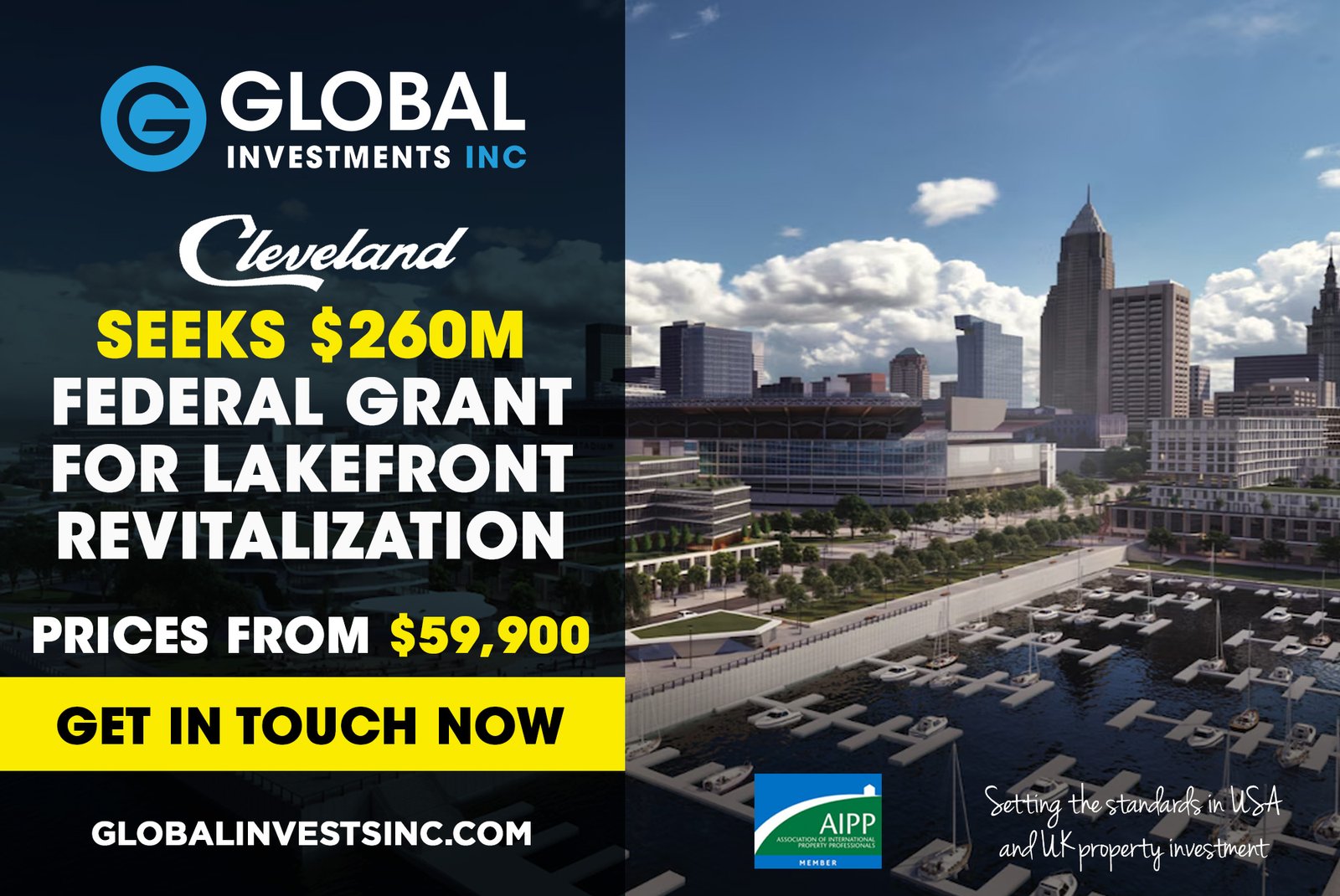
Cleveland Seeks $260M Federal Grant for Lakefront Revitalization
Cleveland is forging ahead with its ambitious plans to transform the downtown shoreline, undeterred by the uncertainty surrounding the future location of the NFL Browns’ lakefront stadium. In April, the city applied to the U.S. Department of Transportation for $260 million in funding to help cover the costs of a $440 million overhaul of the downtown section of the Ohio 2 Shoreway and the construction of a lakefront “land bridge” from the Mall to North Coast Harbor. This application marks Cleveland’s first significant effort to secure federal funds to create a more beautiful and accessible downtown lakefront after a century of numerous failed attempts. City officials recently discussed the grant application and other lakefront initiatives to clarify that the uncertainty over Browns Stadium is not hampering their efforts. Jeff Epstein, the city’s chief of integrated development, and Scott Skinner, the first director of the city’s new private, nonprofit North Coast Waterfront Development Corp., highlighted the ongoing work on the lakefront and the plans for the next year. They emphasized that revamping the Shoreway and building the lakefront connector, or land bridge, are critical to the city’s vision, regardless of the stadium’s future location. Key Components of the Project Enhanced Transportation Networks: A significant portion of the funding will improve connectivity between downtown Cleveland and the lakefront. This includes constructing pedestrian bridges, bike paths, and enhanced public transit routes, making the waterfront more accessible to residents and visitors alike. Public Amenities and Recreational Spaces: The project aims to create new parks, recreational facilities, and public spaces along the lakefront. This will provide more leisure opportunities for the community, attract tourists, and stimulate local businesses. Environmental Sustainability: A focus on green infrastructure is central to the project. Plans include implementing sustainable practices such as stormwater management systems, native landscaping, and creating habitats to support local wildlife. Economic Development: By revitalizing the lakefront, Cleveland aims to attract new businesses, restaurants, and cultural attractions. This economic boost is expected to create jobs, increase property values, and enhance the overall quality of life for residents. Community Impact City officials believe the grant will significantly impact the local community by fostering a sense of pride and ownership among residents. The project aims to create a lakefront that is visually appealing, functional, and beneficial for the entire city. “We are incredibly excited about the potential of this project,” said Cleveland Mayor Justin Bibb. “Securing this federal grant would allow us to make transformative changes that will benefit Clevelanders for generations to come. Our lakefront is one of our greatest assets, and this investment will help us unlock its full potential.” Addressing the Stadium Uncertainty The uncertainty regarding Browns Stadium’s location remains, as the team’s owners, Jimmy and Dee Haslam, have proposed a $2.4 billion domed stadium and entertainment district in suburban Brook Park. This proposal raises questions about the future of the current lakefront stadium, where the team’s lease runs out in 2028. Renovating the existing stadium is expected to cost about $1 billion, with taxpayers contributing a substantial portion. Despite this, the Browns have voiced their support for the city’s ongoing lakefront development efforts. “We have stated continuously how we feel about the lakefront and how we feel something needs to happen down there with our stadium or without,” said Peter John-Baptiste, the Browns’ spokesman. Next Steps The application for the federal grant is a competitive process, with cities nationwide vying for a share of the funding. Cleveland’s proposal has been meticulously crafted to highlight the city’s unique strengths and the broad benefits of the project. Community leaders and stakeholders have been actively involved in the planning process, ensuring that the project reflects the needs and desires of Cleveland’s residents. Public meetings and feedback sessions have been held to gather input and build a vision that is inclusive and forward-thinking. Conclusion Cleveland’s pursuit of the $260 million federal grant represents a significant step toward reshaping the city’s lakefront. If successful, this project will not only transform the physical landscape but also invigorate the local economy and improve the quality of life for all Clevelanders. The city’s commitment to innovation, sustainability, and community engagement makes this an exciting chapter in Cleveland’s ongoing development story.


